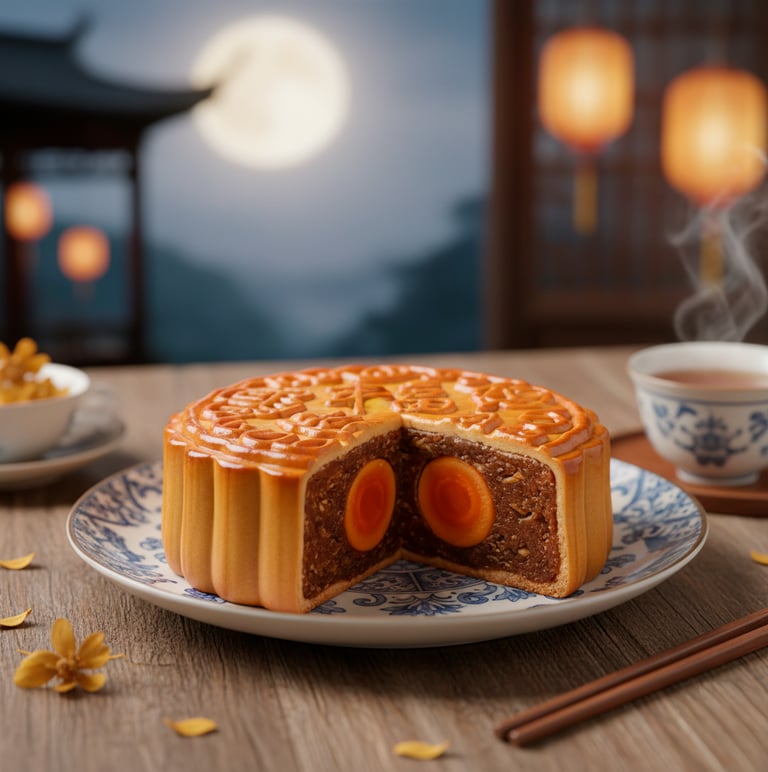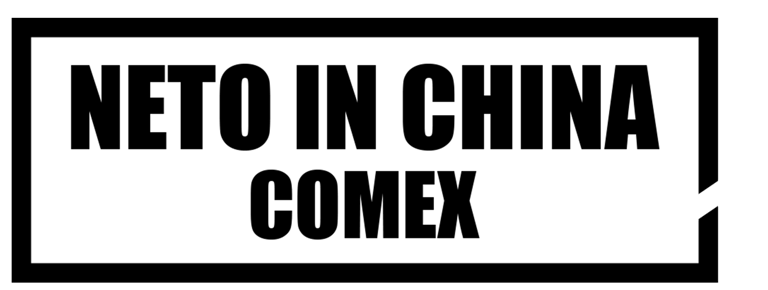Mid-Autumn Festival: A Day to Eat the Famous Mooncake!
中秋快乐! (Zhōngqiū Kuàilè!) – Happy Mid-Autumn Festival! The Mid-Autumn Festival is one of Asia's biggest celebrations, a millennia-old holiday about gratitude and family reunion. Learn all about the tradition, the powerful symbolism of the moon, and the culinary star: the delicious Mooncake!
NEWSCURIOSITIES
Neto in China
10/6/20252 min read
Mooncake:
One of the traditions of the Mid-Autumn Festival is eating this little cake!


The calendar of Chinese festivities is full of colors and significance, and one of the most important moments is the Mid-Autumn Festival (or Moon Festival)—in Chinese: Zhōngqiūjié - 中秋节).
What is the Mid-Autumn Festival?
Known by various names, such as the Moon Festival, the Reunion Festival, the August (or Eighth Month) Festival, or the Children's Festival, this holiday is celebrated annually on the 15th day of the 8th month of the Chinese lunar calendar. The name "Mid-Autumn" is due to the date falling exactly halfway through the third month of the autumn season. Its origins date back over 3,000 years. The festival began in the Tang Dynasty (618-907 AD) and grew in popularity during the Song Dynasty (960-1279 AD). During the Ming and Qing Dynasties (1368–1912), it became one of the country's main festivals. Since 2008, it has been recognized as a national holiday in China.
The Symbolism of the Full Moon
The day of the celebration is chosen because it is when the moon is at its fullest, roundest, and brightest phase of the year. In Chinese culture, the round shape of the full moon (yuán) symbolizes:
Reunion (tuányuán): Perfect union and the return home.
Harmony: Fullness and balance.
Completeness: Happiness and prosperity for the entire family.
This symbolism makes the Mid-Autumn Festival an essential date for all family members, even those who live far away, to strive to return home and celebrate together. Due to its historical depth, the complexity of its rituals, and its importance for social cohesion, the Mid-Autumn Festival is recognized as Intangible Cultural Heritage. The Chinese state demonstrates great importance in protecting this legacy: on May 20, 2006, the festival was approved by the State Council to be included in the first batch of the national list of intangible cultural heritage. This status not only protects the celebration but also emphasizes the need to preserve and transmit the knowledge and practices that define it, including:
- The legends and tales associated with the moon (such as the story of Chang'e and Hou Yi);
- The artisanal techniques for making lanterns and Mooncakes;
- The central ritual of reunion, which ensures that younger generations understand the value of family and returning home.
By celebrating the Mid-Autumn Festival, families aren't just enjoying a festive evening; they are actively participating in and perpetuating an invaluable cultural legacy.
The Core Traditions of the Festival
The celebration involves rituals and customs that have been passed down through generations. The most striking, without a doubt, is eating the mooncake (in Chinese: 月饼 yuèbǐng). This small, dense, round cake is the most symbolic food of the date, reinforcing the shape of the full moon and the concept of reunion. The cakes are richly decorated with Chinese characters that convey wishes for happiness and prosperity.
The most common ingredients are:
Lotus Seed Paste: The classic and most popular filling.
Red Bean Paste: A sweet and earthy alternative.
Salted Egg Yolks: Placed in the center, the yolks represent the full moon.
The exchange of elegant boxes of mooncakes as gifts among friends, family, and business partners is also a popular custom. On the Mid-Autumn Festival, the heavens and the Earth align to celebrate unity. It is an annual reminder that, regardless of distance, family and gratitude are the brightest values under the splendor of the full moon.
中秋快乐! (Zhōngqiū Kuàilè!) – Happy Mid-Autumn Festival!
© 2025. All rights reserved.
📍 Brazil
Pamplona st., 145, Edifício Praça, Conjuntos 1 e 2, Jardim Paulista, São Paulo, SP, BR - POSTAL CODE 01405-900
📍 China
Room 43, No. 78, Wuxing Road, Lucheng Town, Tongzhou District, Beijing, CN - POSTAL CODE 101100
